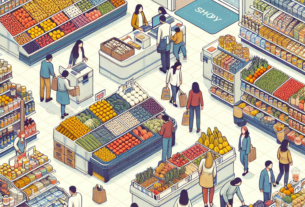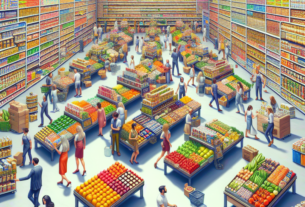Introduction
As the world slowly recovers from the impacts of the COVID-19 pandemic, grocery retail companies are facing a new set of challenges and opportunities in a post-COVID shopping world. This report will delve into how grocery retail companies are adapting to the changing consumer behaviors, market dynamics, and technological advancements to thrive in the new normal.
Current State of the Grocery Retail Industry
According to a recent report by CulinaryCoverage.com, the global grocery retail industry is projected to reach a market value of $12 trillion by 2025. The industry is highly fragmented, with a few major players dominating the market share. Some of the key players in the industry include Walmart, Amazon, Kroger, and Tesco.
Impact of COVID-19 on Grocery Retail
The COVID-19 pandemic has significantly impacted the grocery retail industry, leading to a surge in online shopping, contactless delivery, and curbside pickup services. Many grocery retailers had to quickly adapt to the new reality by implementing safety measures, expanding their e-commerce capabilities, and rethinking their supply chain strategies.
Financial Performance of Grocery Retail Companies
Walmart, one of the largest grocery retailers in the world, reported a 7% increase in revenue in 2020 compared to the previous year. The company’s online sales also saw a significant jump, growing by 79% during the same period. Amazon, another major player in the industry, reported a 38% increase in revenue in 2020, driven by a surge in online grocery sales.
Market Share of Grocery Retail Companies
Walmart currently holds the largest market share in the grocery retail industry, accounting for approximately 14% of total sales. Amazon follows closely behind with a market share of 12%, while Kroger and Tesco hold 8% and 6% of the market share, respectively.
Consumer Trends in Post-COVID Shopping
Consumers are increasingly demanding convenience, safety, and personalized shopping experiences in the post-COVID era. Many shoppers are opting for online grocery shopping, subscription services, and contactless payment options to minimize physical contact and save time.
Technological Advancements in Grocery Retail
Grocery retailers are investing in advanced technologies such as artificial intelligence, machine learning, and robotics to streamline operations, enhance customer experiences, and optimize inventory management. For example, some companies are using AI-powered algorithms to predict consumer demand and optimize pricing strategies.
Future Plans of Grocery Retail Companies
Looking ahead, grocery retail companies are focusing on expanding their e-commerce capabilities, improving last-mile delivery services, and investing in sustainable practices to meet the evolving needs of consumers and stay competitive in the market. Some companies are also exploring partnerships with tech companies to leverage data analytics and AI to drive growth.
Conclusion
In conclusion, the grocery retail industry is undergoing a transformation in response to the changing consumer behaviors, market dynamics, and technological advancements. By adapting to the new normal and embracing innovation, grocery retailers can position themselves for success in a post-COVID shopping world.



